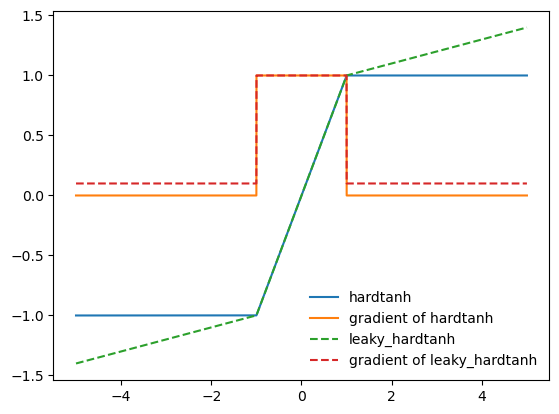Leaky HardTanh Activation Function
Pytorch implemenation of the leaky version of the hard hyperbolic tangent (hardtanh) function. For the non-leaky hardtanh defnition, see the PyTorch documentation here.
LeakyHardTanh definition:
In comparison to hardtanh the leaky_hardtanh has a defined (non-zero) gradient outside the linear region. This is an equivalent change as moving from the ReLU activation function to the LeakyReLU activation.
The best usage for the activation function is likly to add a soft inductive bias to a model by implying an optimal output region between min_val and max_val. Yet gradients outside this region are still well defined.
See below for a comparison of the gradients of leaky_hardtanh vs hardtanh:

Call via:
m = nn.LeakyHardtanh(min_val=-2, max_val=2, min_slope=0.001, max_slope=0.001)
input = torch.randn(2)
output = m(input)Please note that this code uses the torch.where implementation, which is comparatively slow. Therefore executing leaky_hardtanh is about 7x slower than using leaky_relu. Hence it is suggested to use this activation either in only small neural networks or better only as the output actiation.